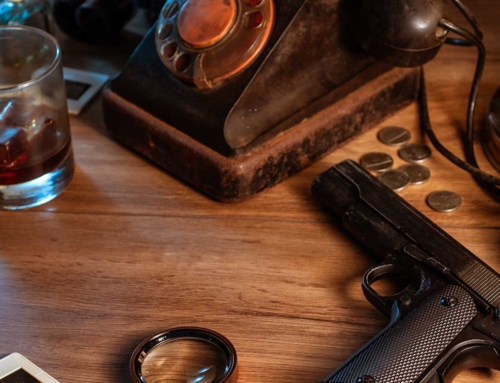
Flower Arranging
Tips & Tricks
While every season has its unique qualities, there’s something so enchanting about spring. Whether it’s the calm before the storm of summer or the slow shift from winter’s gray to spring’s vibrant hues of green, these seasonal changes have a way of making us feel renewed. Things are beginning to grow again, and buds begin to appear. Daffodils blossom with their bright, yellow petals as if they were dancing and your soul feels lifted by this change. Tulips push up through the ground to bloom in a show of pastels and vibrant colors.
One way to share the feeling of spring’s renewal in your home is with cut flowers.
Creating beautiful floral arrangements is not only rewarding artistically, but also life-affirming. From bringing a burst of color to a dreary day to welcoming visitors to your home with a vibrant spring bouquet, flower arranging has a way of lifting our spirits and our moods.
It’s a wonderful experience to freestyle an organic, asymmetrical floral arrangement that serves as your very own work of art. Whether you crave a fresh color in your home or want to bring together your décor around the natural beauty of flowers, your endeavors will transform even the smallest space into one that is warm and inviting.
Cut flowers, either in a bud vase, a table arrangement, or a centerpiece, are living inspiration for you and your home, helping to bring it back to life after the long, cold winter months.
Flower arranging can sometimes be intimidating, even for the most creative. But there are certain things to keep in mind to make the process go smoothly. In order to create a beautiful and eye-catching centerpiece, you must plan your design and theme, gather proper tools and materials, and get started on the flower arrangement itself. Please read on for a few tried and true rules for creating a floral array that looks fresh, vibrant, and lasts longer.
It’s essential to come up with a good design for the arrangement and one that fits into the space provided. If you only have a little space on a table or have a large number of flowers with which to work, you’ll need to plan accordingly. If possible, you’ll want to display your arrangement in an area that gets natural light rather than artificial light. A west-facing window works exceptionally well if you have one—giving the right balance of sunlight and shade for your flowers.
While there’s no wrong way to arrange flowers, mastering the art of floral arranging means adhering to basic tenants to make your arrangements look healthier and fuller—and impress your friends and relatives every time.
How to Begin
So, where do you start? Let’s begin with the flowers themselves. When choosing your floral elements, you’ll also be creating a palette of colors that’s balanced and harmonious when combined. When arranging flowers, you’ll want to consider the colors of the flowers in relation to your space. Look at texture, color, and size to help decide which flowers will work best together. Texture helps create shapes in the arrangement while color creates contrast and highlights with pops of color.
It’s important to know your flowers’ personalities and care needs. Doing a bit of research beforehand can avoid potential pitfalls that can ruin an arrangement.
Choosing more lush, full flowers and greenery will create a romantic, garden-style design. Smaller blooms and greenery can simulate a field of wildflowers if you’re designing something light and whimsical. Varying sizes give your arrangement more volume and make everything appear more lifelike. Don’t forget about fragrance because it is another key component of an effective flower arrangement.
Ever seen a cut flower arrangement, but don’t know which flowers were used? Let’s review the categories of flowers used in a typical arrangement. Here are the common ones.
Please Note: we are not listing every individual flower in each category that is available. Please research the category name on the web to find individual names.
Focal Flowers
The “stars” of your arrangement are the focal flowers. These are the flowers with large, round blooms that have a greater visual impact. Dahlias, China peonies, Juliet roses, sunflowers, and carnations are examples of flowers that fall in this group—the type of blooms that reach out and grab your attention.
Filler Flowers
Filler flowers are the supporting characters in a flower arrangement or bouquet. These small blooms are used to build bulk into your design. Tiny flowers and berries such as mums or hypericum can be used, as well as spray roses and mini carnations to add more color and textures.
Greenery
Greenery is a beautiful way to enhance and complete your flower arrangements. Greenery can play a key role in a design—to fill out negative space, as a base for supporting flowers, or as another exciting element in your arrangement. While your flowers will catch most guests’ eyes, greenery supports the overall design. Greenery can create your overall shape and set up the base for you to build the rest of the arrangement. The placement of your greenery will determine if your design direction is more structured or flowing.
Here’s a few popular choices: bush ivy, camellia, dogwood, dusty miller, eucalyptus, ferns, herbs, heuchera, lemon leaf salal, and Leucadendron.
Detail Flowers
Detail flowers are lighter and more delicate blooms (such as sweet peas, butterfly ranunculus, and cosmos) that add airiness and movement to an arrangement. As they float above arrangements, these blooms add texture and elegance. Because their stems are fragile, they are typically added toward the end.
Line Flowers
Line flowers, such as spirea and astilbe, are tall, upright flowers with florets arranged along the stems. They are used to extend a floral design outside of its container or vessel and into the space it occupies. Line flowers add bounce, movement, delicacy, and airy, breezy elements to a design.
Other flowers with buds growing up a center stalk are foxglove, delphinium, snapdragon, gladiola, blazing star, tuberose, veronica, and bells-of-Ireland.
In the thriller novel Last Flower by Niklas Three, flowers are an important literal and symbolic element for the hero throughout the book.
Excerpt from “Last Flower: A Suspense Thriller Novel” by Niklas Three. © Reprinted by permission. All rights reserved.
Hands shaking, Leslie tore open a tiny packet of floral food, mixed it with water in a vase, dropped in a foam block, and began carefully positioning the cut flowers in the metal container. One by one she paired soft, yellow parrot tulips with delicate, blue-violet hydrangeas to create a sizable bunch. Around the perimeter of the grouping, she added magical, gumball-pink hypericum berries interspersed with pastel-yellow cymbidium orchids. Acknowledging to herself that the posy was more for her benefit than anyone else, she fussed with the whimsical arrangement, fearing what she’d see …
How to Arrange Your Flowers
- Gather your tools. You’ll want to get your hands on floral tape, scissors, foam pads, a vase or another container for flower placement, and the flowers themselves. Flowers can be bought at your local florist, garden center, and often at grocery stores. Choose fresh flowers on the day you plan to arrange them, as they will last longer.
- Prep your vase or container by washing in clear water.
- Find a quiet and well-lit space to work with a table or bench.
- Add flower food to the vase water (a synthetic nutrient that hydrates and preserves flowers for longer).
- Use a foam pad inside the vase or container to create a stable base for the display—place flowers on the foam pad so that they radiate out from the center.
- Keep the cut flowers from your own garden, local florist, or garden center in water until the last possible moment before trimming and prepping for the arrangement.
- Now that you have the right tools and space, it’s time to follow your arrangement plan or freestyle a design to fit the container.
- It’s essential to come up with a good strategy for the arrangement and one that will complement your home. Follow your plan but don’t be timid—improvise when inspired.
- Cut the stems of the flowers to the length desired once you’re happy with your design. It helps to bevel them at an angle of 45 degrees using scissors or a floral knife.
- Snipping gives you more control over how long your blooms stay fresh. Just be sure you’re using clean hands and surfaces when you do it!
- Avoid puncturing the stems, as this can loosen plant fibers and cause them to wilt.
- Try not to tear the petals! When you cut flower petals, you expose their vital core and make them more fragile. It’s better to snip errant petals with clean kitchen scissors instead of pruning shears or breaking them off by hand.
- Start arranging the flowers in a way that lets their natural beauty shine through.
- Take care as you place each flower to lay attractively within the arrangement as planned.
- When working on your arrangement, keep in mind the famous design quote: less is more. Flowers and greenery don’t necessarily have to be tucked into every nook and cranny in the vase.
- When arranging flowers, pay attention to color, shape, and texture, which are the most important visual components of an arrangement. Texture is critical because it attracts the eye while complementing the focal flowers’ shape and size.
- “Line” flowers displayed in a tall cylindrical vase look striking by themselves. A simple sunflower in a bowl on a breakfast table is as exciting as a showstopper prize display bursting with focal flowers.
- Arrange your project all at once or come back to the project the next day to finish.
- Keep those flowers looking fresh by adjusting your arrangement every day or two and replacing the water every few days.
- Flowers will remain blooming after you put them in a vase if they are kept in partial sunlight, kept away from drafts, and a fresh cutting to the stems are made every time the water is changed.
- Remember, practice makes perfect!
With a little practice and research, flower arranging is a skill that anyone can excel at. Once you know the basic rules of thumb, it becomes easier to let your creativity take center stage. Keep experimenting with different arrangements for your home or office, and you may find that floral arranging is an art form you enjoy.





















